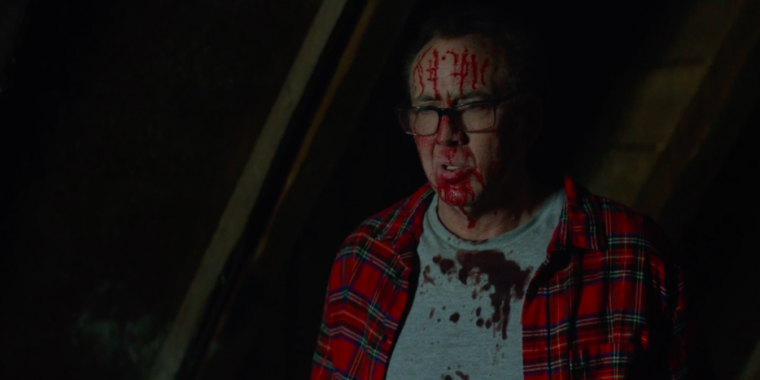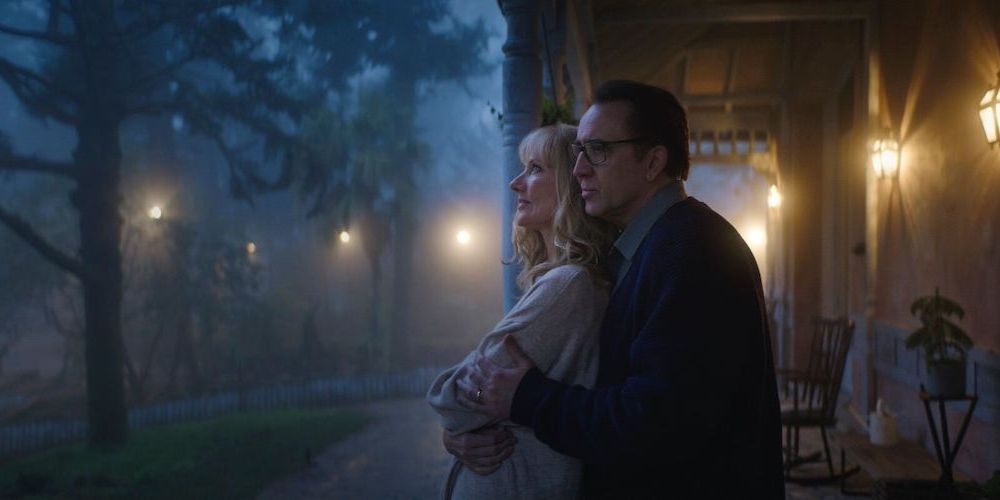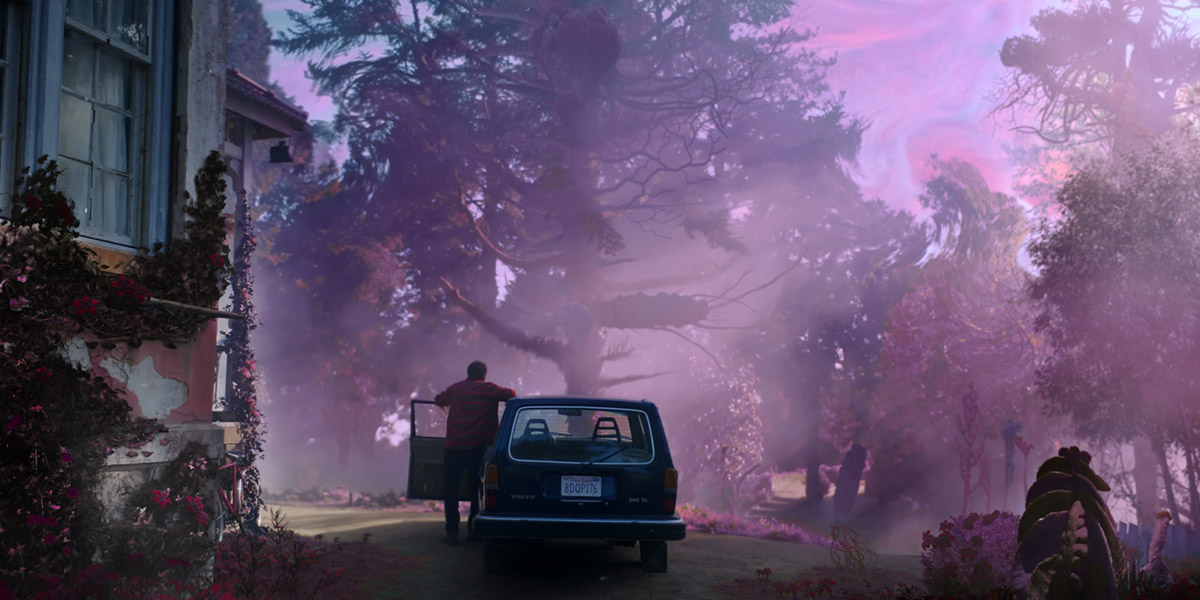If you want your movie to have a malignant dose of Nicolas Cage at his craziest, you scarcely need to adapt an H.P. Lovecraft short story that’s nearly a century old. Cage will offer his most marketable performative asset without a proviso in his contract, probably even if the story and his character don’t call for it, probably even if the director doesn’t ask for it. Because we so love unhinged Cage, though, one wonders if that was a primary motivator for Richard Stanley casting Cage in the latest adaptation of Lovecraft’s “The Colour Out of Space,” or even, for him adapting the story in the first place.
Lovecraft’s story describes a patch of remote farmland near the fictional town of Arkham, Massachusetts, whose name provided the inspiration for the Gotham City asylum that has figured into so many Batman stories over the years. That’s because the Arkham in both Lovecraft’s and Stanley’s Colour Out of Space is home to crazy people indeed. A meteorite emitting a pinkish-purplish glow, which is meant to approximate a colour that’s outside the normal visual spectrum of human beings, crashes near the well of the Gardner farm, headed by paterfamilias Nathan (Cage).
At first the impact of this impact is unknown, and it may just be an inexplicable curiosity. But soon flowers of this alien colour start sprouting near the base of the well, and the water has been poisoned to a brackish brown. But not before the Gardners – wife Theresa (Joely Richardson), daughter Lavinia (Madeleine Arthur), older son Benny (Brendan Meyer) and younger son Jack (Julian Hilliard) – have started drinking it. Though given the way this alien presence, including the hatching of some actual alien insects, begins permeating the local landscape, the exact means of contamination starts to seem beside the point.
The events are witnessed by a water surveyor (Elliot Knight) who comes up from Providence, Rhode Island to test the water table ahead of a possible damming of the region. As in Lovecraft’s story, he is our viewer surrogate, who witnesses events that go quickly from unusual to surreal and beyond.
It’s ripe subject matter for a pulpy B movie, and that’s essentially what Colour Out of Space is. The title of the story’s first adaptation, 1965’s Die, Monster, Die!, certainly provides a good context for how to view this material, as well as a possible ceiling for its profundity. As with many of Lovecraft’s works, there is not an obvious social message to be gleaned from the story. Sometimes it’s just “shit happens.” And “shit,” in this case, is a meteorite delivering aliens to earth and infecting everything within a five-mile radius.
Since movies traditionally need to have a point that goes beyond “shit happens,” Stanley and co-writer Scarlett Amaris seem to be nudging at larger themes, without actually committing to them or seeing them through. For one, Richardson’s Theresa is a cancer survivor in remission. Then there’s the notion that this family has come to this farm to get off the grid and start over, as they are also breeding alpacas. There’s the idea that Nathan might be an abusive alcoholic, which gives it maybe a bit of a Shining vibe, and also that Lavinia may practise witchcraft. Finally you have the very under-utilised character of the corrupt local mayor (Q’orianka Kilcher), who comments at one point that Nathan should have sold the land to her when he had the chance. But we’re not meant to believe she somehow caused this pestilence, and the function of her character is pretty much nil.
The movie is better when it sticks to showing us what this alien presence is doing, but even then it owes a debt to another recent film on a similar subject, Alex Garland’s Annihilation. That film also involved a meteor strike, an incursion of alien flora and fauna, and even some of the same body horror that this film offers. So however creepy and disturbing that body horror may be, it doesn’t feel like grotesque inspiration that originates with this film.
And then you have Cage. For a time it appears this will be one of his more normal roles, as he doesn’t preview the coming untethering in the film’s opening passages. The change in his persona, then, feels a bit abrupt when it does come, like the director said “Okay! Time for Crazy Cage!” He does deliver some memorable moments that could be shown in a clip reel devoted to the actor in his most familiar mode. But maybe because we’ve seen slightly purer and more organic versions of Crazy Cage in the recent films Mandy and Mom and Dad, this too feels a bit secondhand.
“Secondhand” is not such a bad place for a B movie to be. And there’s something else to consider about this one that makes it more of a success than if you’re just looking at what’s on screen. Stanley had not made a feature film since he was fired from The Island of Dr. Moreau way back in 1996, when Marlon Brando was still alive. He was originally selected for that role due to an eye for the twisted that he showcased in films like 1990’s Hardware. If he can return 24 years later with that eye still intact, ready to make a trilogy of Lovecraft adaptations if he can fulfil his intended plans, then maybe we have more grotesque and satisfying B movies in our future.


